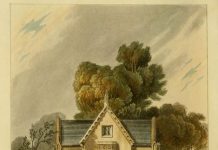Spring training program scheduled for Canadian and U.S. designers, architects and engineers
Passive House Institute US (PHIUS) was founded in 2003 and since that time has worked to advance passive building in the U.S. and Canada through training, education and a range of resources. PHIUS has several ongoing training programs, including programs this spring in Chicago, Seattle and Philadelphia.
For an update on upcoming PHIUS training programs see this link.
Chicago-based PHIUS executive director Katrin Klingenberg says the organization’s trainings are intended for professionals across a variety of fields including design, architecture and engineering. “The Certified Passive House Consultant (CPHC) training is conducted in two phases that include an online theory portion that can be completed at the student’s own pace, and then a second phase which is a five day in-class session that includes a final exam.”

During the in-class phase she says, students will practice energy modeling to better understand and practice the theory they have learned.
Klingenberg says each class can accommodate 15 to 25 participants and that the demand exceeds space availability. An application process ensures participants have the required base knowledge and interest to take the training, so qualified participants have a more successful student experience.
“The training is critical for those who wish to work on passive house projects and generally involves people who have a plan to move in that direction. Because the learning is focused on a holistic understanding of the building envelope and mechanical and engineering elements, a certain knowledge and experience level is required.”
Since the training program’s introduction in 2008, Klingenberg says much has changed, with new products, new ideas and new formulas coming to the forefront. With that in mind, the curriculum has also been updated regularly to include the latest best practices. “In the early days the training changed significantly and often. Now we’re at a steadier place where updates are minor.”

PHIUS originally based its training and certified projects on European passive house standards. However, PHIUS quickly became aware of the critical differences between the moderately cold climate of central Europe, where the European standard was developed, and the varied climates and markets in North America. Today’s training has therefore evolved to incorporate more cold, very cold and hot and humid climate considerations.
Although passive house is often regarded as a European concept, the passive building concept was actually the result of North American research efforts funded by the U.S. and Canadian governments during the 1970s and 1980s. That work established the fundamental building science principles that underpin the passive house concept.
Klingenberg says a lot of the driving interest in passive house and related training has come from the coastal areas of the northwest and northeast, including significant Canadian interest. Attention to different climates has been important.

“The European model is a good fit for the Vancouver climate for instance, which is very similar to central Europe, but it doesn’t work just as well in other parts of the U.S. and Canada,” she said.
In 2015 PHIUS implemented the climate-specific PHIUS+ 2015 Passive Building Standard, the product of three years of research funded by the U.S. Department of Energy (DOE) and in partnership with the renowned Building Science Corporation. The resulting standard produced climate specific target metrics that represent the sweet spot between aggressive energy conservation and cost effectiveness, without compromising the main characteristics of a passive house, which include health and comfort. The standard provides designers a guideline on when to stop investing in the envelope and when it’s more cost effective to invest in renewables. PHIUS+ 2015 was the first passive building certification program to combine a thorough passive house design verification protocol with a stringent Quality Assurance and Quality Control (QA/QC) program performed on site by highly skilled and specialized PHIUS+ Raters.
These updates, she says, are added into the online portion of the CPHC training so that those wishing to update their basic knowledge of the standard can take just this component to stay current.
According to PHIUS’ website: “CPHC is the only professional passive building credential training program that includes instruction in energy modeling software and the only professional passive building credential with a longstanding continuing education program in place. It is the only passive building training program tailored to North America’s unique climate variations, market conditions and building components. PHIUS, the leading North American passive building training provider, has trained more than 2,000 professionals to date, including 1,350 CPHCs.”

Another training PHIUS offers is WUFI Passive, essentially a crash course on the modeling software that allows users to “model buildings to meet the PHIUS+ Certification performance standard, access unique built-in hygrothermal modeling capabilities and to toggle between static and dynamic modeling modes, as well as generate reports for clients and certification documentation.”
This course, Klingenberg says, can also be a valuable refresher for those who have previously taken the CPHC training but have not been active in its implementation.
In order to deliver the most relevant and effective training, Klingenberg says instructors are drawn from those most active in the field, including some who were students of the organization’s first training classes. “Since then these individuals have gone on to lead significant projects, including large multifamily projects from coast to coast. They provide our students with firsthand knowledge derived from experience in a variety of climates and conditions.”
In addition to its training programs, PHIUS has also developed a suite of product performance data verification models. “We’ve just launched a panel performance data verification program which joins our existing Verified Window Performance Data Program.” These verification programs provide products with labels detailing the applicable climate zones and performance values for each product.
For more information on PHIUS and its programs, visit www.phius.org.





